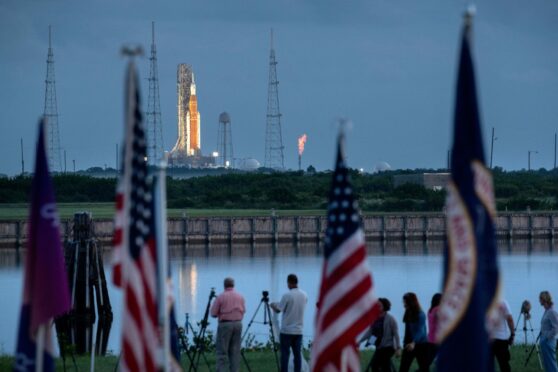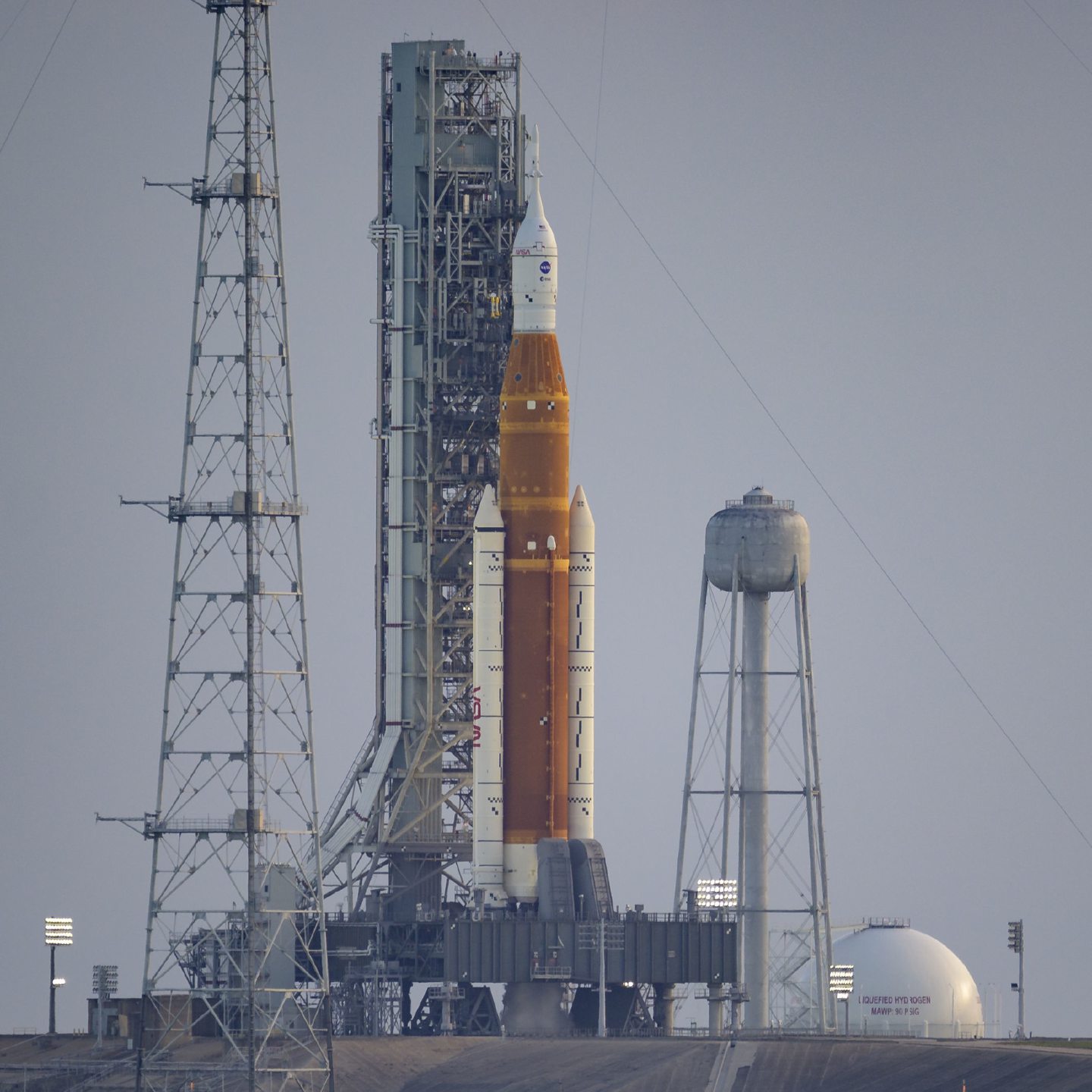
NASA called off the launch of its £3.5bn Artemis rocket for the second time yesterday.
Engineering teams at the Kennedy Space Centre at Cape Canaveral, Florida again experienced several technical problems as they prepared the next-generation rocket for launch.
Artemis – an uncrewed test flight to the moon – was due to launch at 7.17pm five days after an initial lift-off attempt was halted by engineering problems. However, problems emerged when fuelling began.
Late in the afternoon, Nasa said: “The Artemis I mission to the Moon has been postponed. Teams attempted to fix an issue related to a leak in the hardware transferring fuel into the rocket but were unsuccessful.”
The test flight is the first step in Nasa’s Artemis programme of renewed lunar exploration, named after the twin sister of Apollo in Greek mythology.
The 32-story tall Space Launch System (SLS) rocket and its Orion capsule are part of the US’s moon-to-Mars Artemis project – 50 years after the last Apollo lunar mission.
It is believed the US space agency is unlikely to set a fresh date for the new launch until all technical issues have been identified and resolved.
Before the aborted launch, Nasa chief Bill Nelson said: “This is all new technology. That’s why we’re doing a test flight. We’re going to stress it and test it in a way that we would never do with humans on top of it but that’s the purpose of a test flight.
“I’m very confident and if there are what we call ‘anomalies’ in other words mistakes or unexpected events, that’s part of the test flight.”
Before dawn, launch teams started the delicate process of filling the rocket’s core-stage fuel tanks with hundreds of thousands of gallons of super-cooled liquid oxygen and liquid hydrogen propellant.
Nelson added: “This time we’re not going just to touchdown on the Moon and leave after a few hours or a few days – we’re going back to learn, to live, to work, to explore, to determine if there is water.
“This time we’re going to learn how to live in that hostile environment for long periods of time, all with the purpose that we’re going to Mars.”
Engineers stopped loading liquid hydrogen, roughly an hour into the complex process, to fix a leak without success.
The spacecraft burns 2.7 million litres of liquid hydrogen and oxygen to provide the thrust needed to get off Earth.
But when the controllers sent the command to fill the hydrogen tank, an alarm went off, indicating there was a leak.
The problem is at the base of the Space Launch System where a 20cm umbilical line brings in the hydrogen.
Once eventually launched, the spacecraft will travel around the Moon before heading back to Earth 42 days later.
If the journey is successful, then the Orion capsule could have a human crew in later voyages around the moon in 2024 and land on it in 2025.
When Artemis eventually takes off, it is set to be a spectacular sight. Former astronaut Doug Hurley, a pilot on the last shuttle mission in 2011, said: “It’s gonna be ‘shuttle on steroids’”.
He added: “What I always thought was the coolest thing about shuttle launches was you saw it lift off and it was well clear of the tower before you heard anything and then it was even a little longer before you felt it.
“Thrust to weight-wise, the Space Launch System is pretty close to what shuttle was. Apollo’s Saturn V rocket was drastically different.
“I never saw it in person but it lumbered clear of the pad. For shuttle, it seemed like it was clear in an instant, almost as soon as the boosters were lit. SLS should be the same.”
Artemis – years behind schedule and billions over budget – aims to establish a sustained human presence on the moon with crews eventually spending weeks there.
The project and the eventual moon landings are considered a training ground for Mars.

Enjoy the convenience of having The Sunday Post delivered as a digital ePaper straight to your smartphone, tablet or computer.
Subscribe for only £5.49 a month and enjoy all the benefits of the printed paper as a digital replica.
Subscribe © AP
© AP